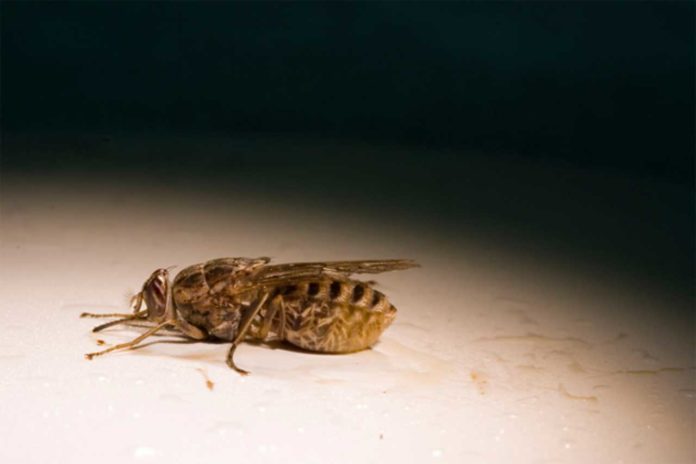Tsetse flies are carriers of the parasites that cause a deadly infection known as African sleeping sickness. Without treatment, an infection is usually fatal.
They have unique reproductive biology. They only develop one offspring at a time; they carry that offspring in their uterus for its entire immature development and provide nourishment for that offspring via milk-like secretions. This specialized reproductive biology has required dramatic modifications to the morphology of these and related flies’ reproductive organs.
Using the 3D X-ray imaging technique, scientists explored the intact organs and tissues of tsetse flies. The imaging technique reveals how the flies’ specialized biology governs mating and reproductive processes, including female flies’ unique lactation and their delivery of a single fully developed larvae per birthing cycle – whereas most other insect species lay eggs.
Geoffrey Attardo, an assistant professor of entomology and nematology at UC Davis, said, “We want to understand what changes are happening during this process, how the process is being mediated, and if it can be manipulated to repress females in the wild from mating artificially.”
For the study, scientists prepared fly samples at several stages of the reproductive cycle.
Attardo said, “While some other techniques require dissection and staining processes that introduce damage to the delicate samples. This project allowed us to create a detailed 3D visualization of the reproductive tissues in their native context, with minimal experimental manipulation.”
“The ALS experiments provided a first, detailed look at the intact structure of a sperm-delivery structure called a spermatophore that fully occupies a female fly’s uterus after mating, for example, and detailed imaging of other reproductive-tract tissues relevant to lactation and birth.”
Dula Parkinson, an ALS staff scientist and Diffraction and Imaging Program leader who participated in the study, said, “I love that as a staff member at the ALS, I can help enable science that makes a difference in the world.”
Journal Reference:
- Geoffrey M Attardo et al. Interpreting Morphological Adaptations Associated with Viviparity in the Tsetse Fly Glossina morsitans (Westwood) by Three-Dimensional Analysis. DOI: 10.3390/insects11100651
